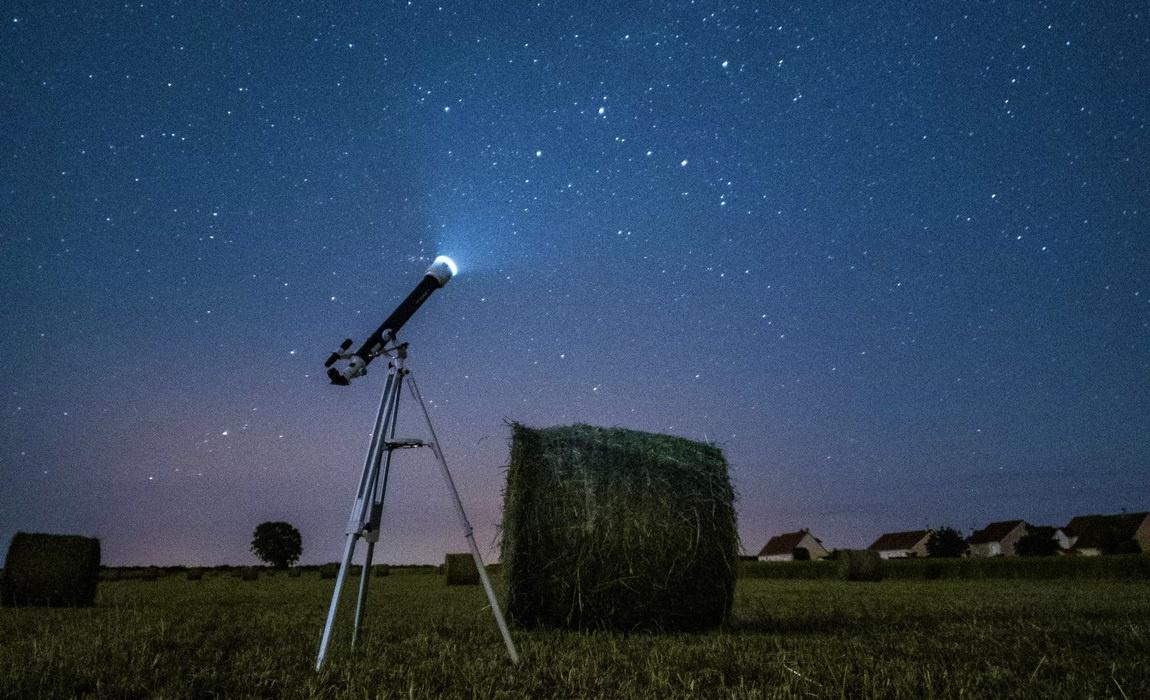The telescope is the one instrument that lets humans see objects in outer space well beyond what can be seen with the naked eye. Now, they are huge and computerized, but the first ones were simple, and even modern telescopes made for private use are designed using the same principles.
Several Different Men Lay Claim To Inventing The Telescope
Lots of people believe that Galileo was the first to build a telescope, but he probably was not the actual inventer. However, Galileo certainly had an impact on
While it is challenging to point to just one inventor, the first modern telescope was documented in 1608. There is some dispute with others at the time saying that fellow eyeglass maker, Zacharias Jansen may have actually created the concept.
However, most modern Historians credit Dutch optician Hans Lipperhey, also called Johan Lippershay since he is the first to have filed a patent and documented the invention.
Without a doubt though, many of his predecessors had been experimenting with magnifying lenses as early as the 13th century. But Lipperhey was the first person to have submitted a patent for a telescope, which was then called a Dutch perspective glass. This patent was submitted to the Dutch government in 1608 but was refused because so many other opticians had applied for a similar patent. Those other inventers though have mostly faded from history and their creation was never developed further than a novelty concept. This makes it difficult to know who was the true inventor of the telescope and it also undermines the claim that he was the sole inventor.
Don't worry too much about Jansen though, his work with lenses continued in a different direction and he's credited with inventing the compound microscope.
Fortunately for Lipperhey though, he was paid for copies of his telescopes design and distributed his invention throughout Europe. In this regard, we can say then that he was the father of the modern telescope with documentation that mention the Dutch optician’s patent application - even though he's application for an official patent was never granted.
This inspired others to develop or improve on the design of their own telescopes. One of them was Galileo who had heard of this new "Dutch Perspective Glasses" and he created his own version in 1609 based on what he had read of Lipperhey's invention.
With the improvements that Galileo made, he discovered the rings of Saturn, four satellites of Jupiter and the mountains and craters of the moon. Additionally, he also demonstrated it to the Venetian Senate who then created a role for him at the University of Padua where he was able to continue his work in astronomy.
While Lipperhey should probably be credited with inventing the telescope and applying it to looking at things far away, it was Galileo who pointed it at the heavens and first used the device to explore the planets, moons, and stars.
How Did Lipperhey Get The Concept For A Telescope?
Inevitably, there are many stories as to how Lipperhey came to design his telescope. In one story, he noticed a couple of children playing with the lenses in his optician’s shop. The children saw that when they put two of the lenses together it made far away objects appear closer. In another story, Lipperhey’s apprentice actually designed the telescope and went uncredited.
Refracting Telescope vs Reflecting Telescope
The type of telescope Lipperhey wanted a patent for was a refracting telescope. This is the simplest type of telescope. It’s made out of a long, heavy tube with an eyepiece, or ocular at one end. This eyepiece is made up of two lenses and is used to view and magnify the object the viewer wants to study. On the other end of a refracting telescope is a large convex lens called the objective, or object lens. This lens pulls in light from the object.
When light from the object hits the objective, the light rays are bent until they come to a focal point. Then, a tiny image is formed at the focus. As the light continues to pass through the eyepiece, the image is enlarged, but appears upside down. The distance between the objective and the eyepiece can be lengthened or shortened to help focus the telescope.
On the other hand, it wouldn't be till 60 years later in 1668 when Isaac Newton created a reflecting telescope. In his invention, instead of lining up lenses in a row, it consisted of a large curved mirror that reflected light to a diagonal mirror so that the viewer could observe the subject the telescope was pointed at.
In more sophisticated telescopes where the image needs to be seen right-side up, a special lens is put between the eyepiece and the objective to invert the image. Indeed, Lipperhey’s telescope showed a right-side-up image because of the shape of the lenses he installed. His telescope also magnified objects by a factor of three.
Today, while technology has advanced tremendously, this core concept is still the dominant design with optical telescopes.
Radio Telescopes Were Invented Much Later
In the early 20th century, scientists began to detect radio waves coming to earth from space. Karl Guthe Jansky is credited as being the first to identify these waves and their location. He is credited as being the person who invented radio astronomy. His early inventions would be considered a "radio telescope" but they bear little resemblance to what we consider they should look like today.
Instead of a large dish shaped device that can be pointed at an object, Jansky's radio antenna were frames that were designed to rotate and looked more like radio antennas designed to receive terrestrial radio signals than an actual telescope. However, he was indeed the first to use this device to observe radio waves from the constellation of Sagittarius and announced his discovery in April of 1933.
It wasn't until a few years later though that Grote Reber would build the first dish antenna radio telescope. His device was constructed in 1937 and was used to map the radio wave structure of the Milky Way galaxy. This dish antenna type device is what most radio telescopes today use for their core design and they have been useful in detecting many astronomical phenomena far too distant to be detected with only an optical telescope.
New Types Of Telescopes Continue To Be Invented
While many new telescopes are enhanced versions of the core concepts designed hundreds of years ago by Lipperhey and Galileo or more recently by Jansky and Reber, there are new techniques that continue to be invented to observe our surroundings. For instance, the Wide Field Infrared Survey Telescope uses infrared technology to see more than you might with a standard optical telescope and may be able to discover "dark energy" that scientists have speculated exists but have not been able to prove.
However, the age of answering "who invented" is probably over in terms of these new scientific instruments since they cost millions of dollars and involved hundreds or thousands of people working together over decades to invent a new telescope that will allow the next generation of astronomers to create their pages in the history books.
Hey James Hills wants you to share this!

